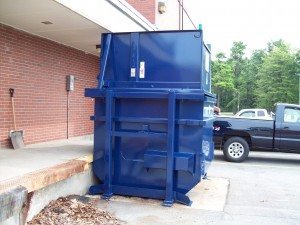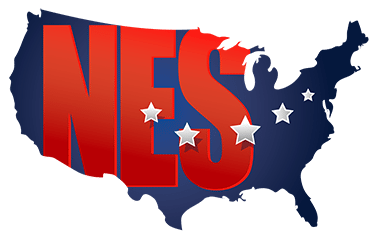While Compaction & Baling can have great economical benefits choosing the right model is paramount to the overall success of your project.
Leave the critical decisions to the experts. Contact National Equipment Solutions (NES) for a professional site survey today. We will review your Waste Stream, Study your site, and propose an appropriate Compaction or Baling solution custom designed to suite your particular waste stream and site conditions.
Our Equipment specialists have the experience to help you identify the right equipment for your waste stream and planned or existing building envelope.
What is a Compactor?
A compactor is a Structural Steel Machine utilizing Electric over Hydraulics to reduce the size and space required to transport materials to a disposal site. The machine generates pressure and crushes materials into a confined space creating “compaction” or size reduction.
There are three basic types of Compactors each specifically designed to handle different Waste Types:
Stationary – Designed Specifically to handle Dry waste including but not limited to Paper, Cardboard, Wood and Plastics
- Common Applications Include; Warehouse & Industrial Space, Retailers & Department Stores
- Available Sizes; 2 thru 6 cubic yard capacity machines which commonly have a 40 cubic yard Breakaway Collection Container Attached.
Self-Contained – Designed Specifically for Wet Waste including but not limited to Food, Food Processing, Medical Waste, etc…
- Common Applications Include; Hospitals, Hotels, Casino’s, Supermarkets, Restaurants and Malls
- Available Sizes; 15, 20, 25, 30, and 35 cubic yard sizes
Pre-Crusher – Designed specifically for Large Volume Bulky Dry Waste including but not limited to Creating Materials, Wood, Paper, Corrugated and Plastics
- Common Applications Include; Industrial, Warehouse, Product Returns, and Manufacturing Facilities
- Available Sizes; 4, 5 and 6 cubic yard capacity machines which commonly have a 40 cubic yard Breakaway Collection Container Attached
Who Should Consider Compaction?
Not everyone generating Solid Waste & Recyclables is an ideal candidate for Compaction. The Waste & Recycling Industries are volume driven. The greater the volume the greater the likelihood Compaction will make economic sense. While Volume is the leading indicator for Compaction Opportunity other factors may also influence a Compaction Solution.
 Generators of Less than 10 cubic yards peSir week are not likely candidates for a Compactor.
Generators of Less than 10 cubic yards peSir week are not likely candidates for a Compactor.- Generators of over 40 cubic yards per week have a greater potential to benefit from Compaction.
In preparation be ready to discuss the following during your NES professional site survey:
- Primary Goal & Expectations
- Waste Type (Dry, Wet, Bulky)
- Current Waste Volume
- Peak and Off Peak Volumes
- Primary Waste Stream Type
- Waste Flow
- Equipment Placement
- Electrical Power Supply
- Service Provider Capabilities
Is your firm interested in Exploring Safe Cost Effective Compaction alternatives to traditional trash collection systems? Contact us today for a complimentary evaluation at 610-640-9200 to find out more about selecting the right equipment for your facility.

